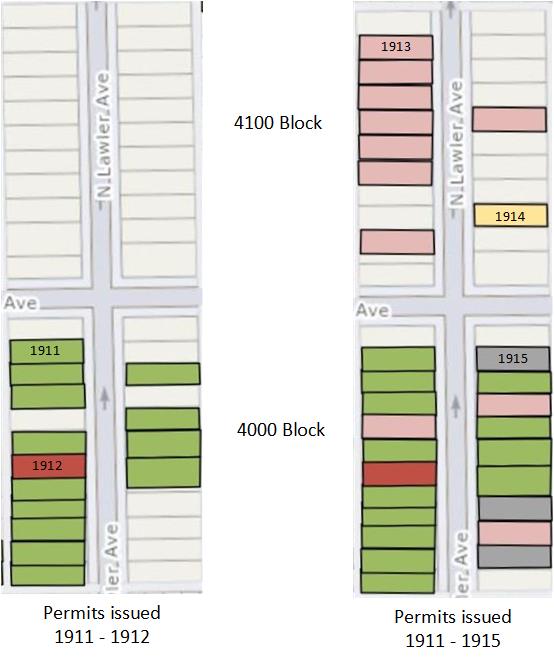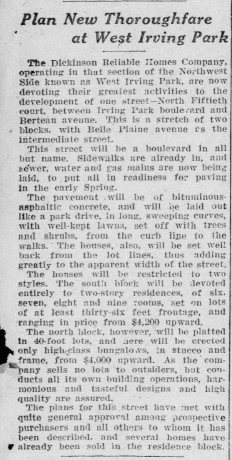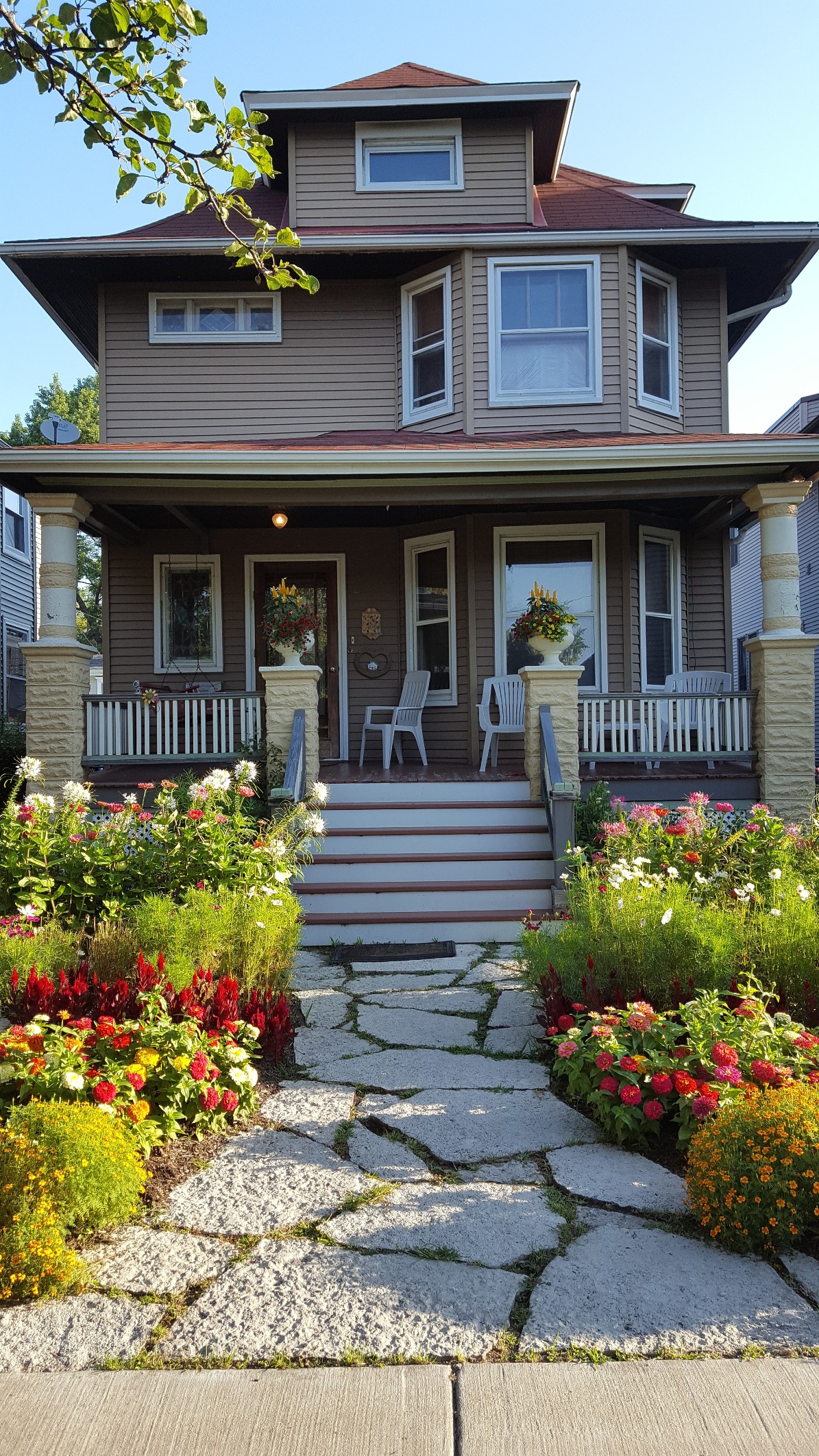June 21, 2022

Lawler Avenue definitely has a feel and flavor that is different from the other single family home streets: Berteau, Leclaire, Leamington, Warner. Right? The homes on the 4000 block are a bit more similar to the other streets, but the 4100 block clearly has a different style, with predominantly stucco and frame homes and with a slight prairie style feel. But that different vibe also has to do with the fact that Lawler Avenue is so doggone narrow.
Based on the building permits, the 4000 block was built up first – starting in 1911 and mostly finished by 1915. The 4100 block got its start in 1913 but continued to be built up into the early 1920’s. The 4000 block was developed/built almost exclusively by Arthur W. Dickinson, along with Fred Pischel, an architect and real estate developer. AWD formed a business partnership with Pischel, which they operated from the Dickinson Reliable Homes office at 4017 N. Milwaukee. Since AWD was also an architect, and he and Pischel were nearly the same age, it’s likely they knew each other through their architecture backgrounds.
The east side of the 4100 block was more varied in terms or owners, architects, and developers, compared to the west side of the street, which was still mainly an AWD/Pischel venture.

As luck would have it…..
As I was taking advantage of the free newspapers.com Mother’s Day special by spending the entire day on a marathon of searches, I unexpectedly ran across this rare gem from 1911, specifically about the plans for developing these two Lawler blocks. This article provides some really unique insights and information about development of our neighborhood in general, besides the specific plans for each block of Lawler.

The article also explains why all of the lots on the 4100 block are comprised of two partial lots – it was not originally platted for 40′ wide lots when the subdivision was created.
Why is Lawler Avenue so narrow?
I think many of you know me by now and my propensity to investigate the gnat’s ass details. So, I went out with my tape measure and measured Berteau, Leclaire and Lawler. Here are the results:

According to city plats and other maps, the city property – sidewalks, parkways, and street – should be a total width of 66′ from lot line to lot line. Close enough, I guess (in our favor, or poor measuring on my part). I’ve also learned through the course of doing this neighborhood research that the developers were responsible for the paving, so they had some ability to control the street widths. And with Lawler essentially being only two blocks long in our subdivision, the impact of a size variation is not that huge. But, all of this nitpicking doesn’t explain, WHY?
I believe that the 1911 article explains it. There is a mention of plans for a boulevard with sweeping curves, but realistically that couldn’t happen. So, I guess they made the parkways wider than usual to try to simulate what they envisioned. That’s my theory. Any other thoughts or ideas?
Other Lawler Avenue Factoids
Named after Gen. Michael Lawler Civil War hero. He was born in Kildare, Ireland on 16 Nov 1814 and he served 2 and a half years during the Mexican War. He died 26 July 1882. Article about Michael Lawler
Also called: 50th Ct., Hazelton Ave., Simms Ave., James St., 50th Pl.
To the north Lawler ends at Forest Glen Woods, just north of Foster. There are shortish runs on the north side: Lawrence to Wilson, Belden to Armitage, North to Chicago, Ohio to Kinzie. On the south side, south of Roosevelt, it is called 50th Court. South of the Stevenson, it is back to being called Lawler.


that is really fascinating! Thanks for doing that research and for charming the good employees at the county clerk’s office!
Ruta,
This is amazing! Transported me to the past!
While they were building the block in 1911, Marie Skolodowska, “Madam Curie” was winning THE NOBEL PRIZE in chemistry, her second, after the one in Physics in 1903, and Chevrolet started out as the Chevrolet Motor Car Company in 1911 who was founded by race car driver Louis Chevrolet and William Durant who founded General Motors.
So we had a home, a car…. and science!
Cool!
Thank you Ruta!
Nice work Ruta!
We appreciate all the time you put into this. Super interesting.
Thank you!